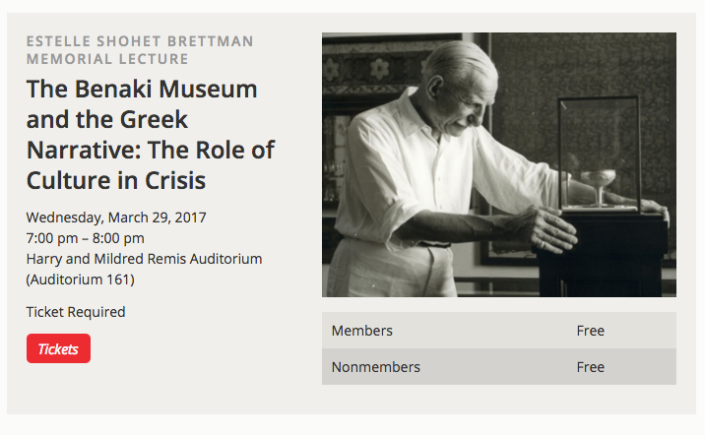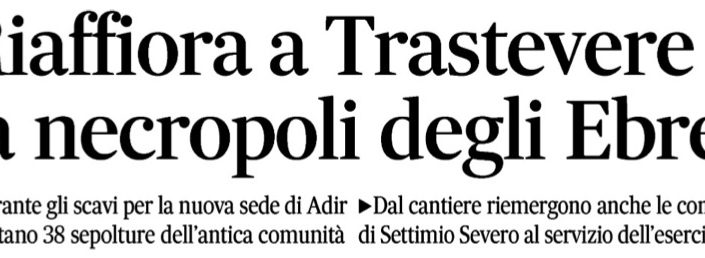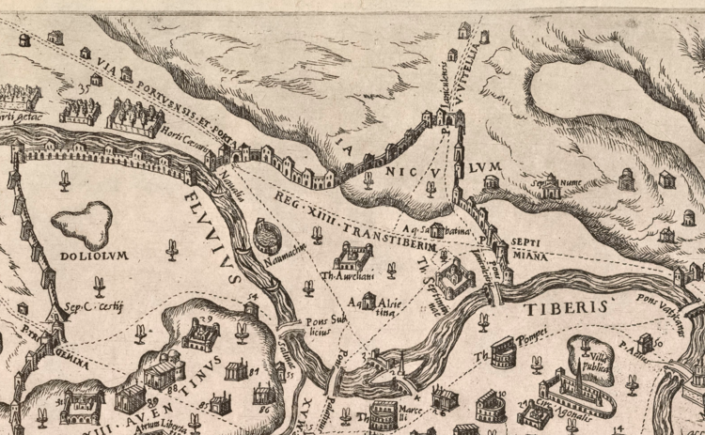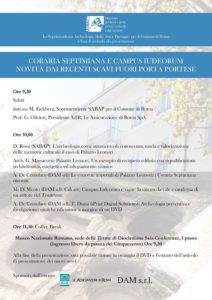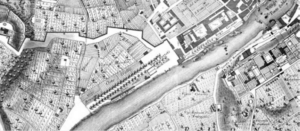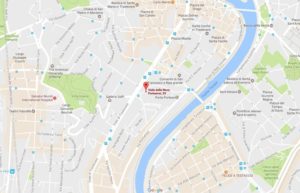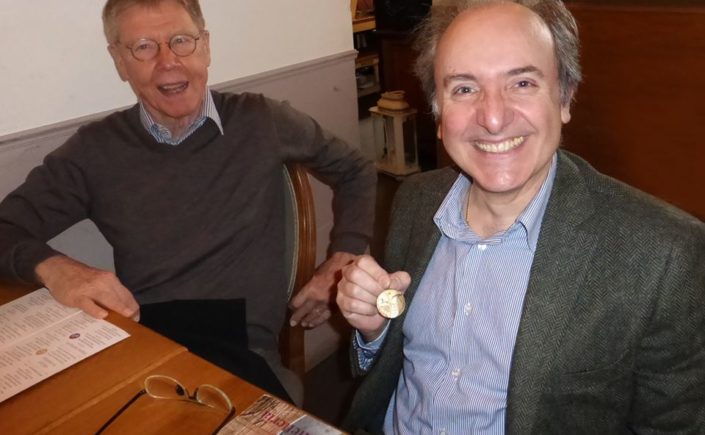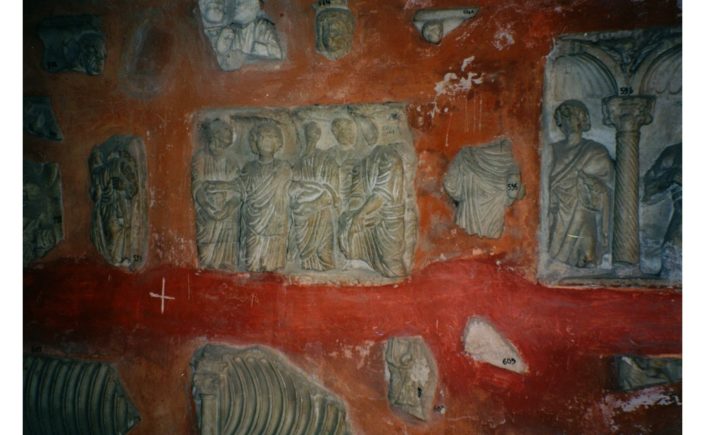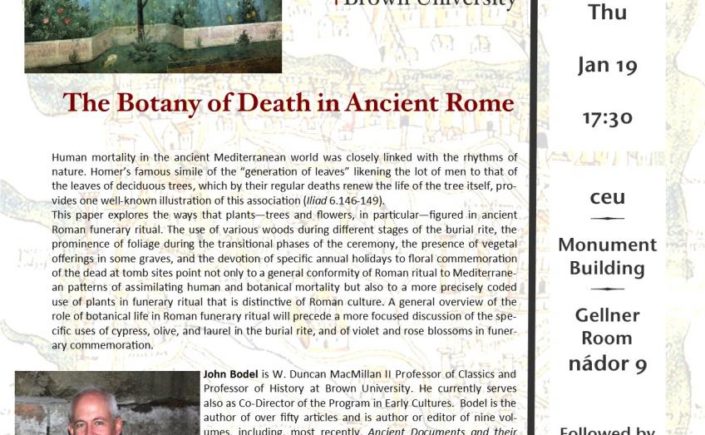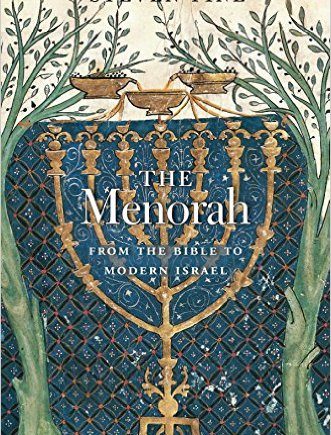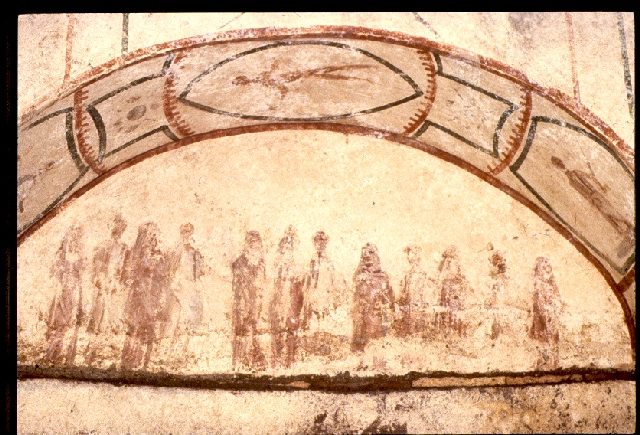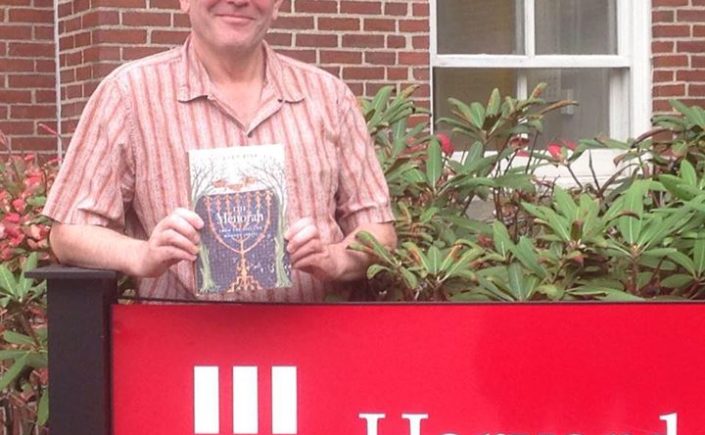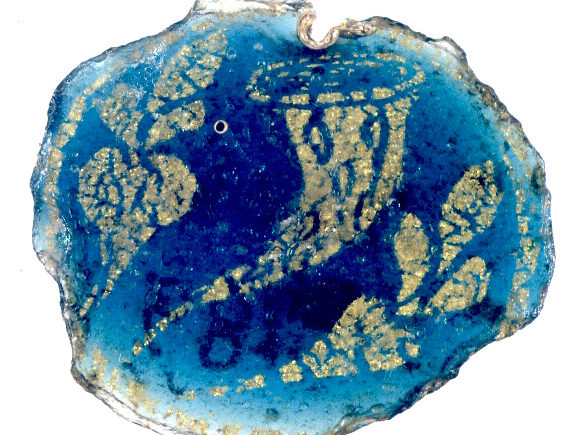International Catacomb Society directors, advisors, and current members are presenting at and moderating many sessions of the 2016 SBL/AAR Conference. Co-hosted by the Society of Biblical Literature and the American Academy of Religion, this event will be held November 19-22, 2016 in San Antonio, TX. The 2016 conference program is online: https://www.sbl-site.org/meetings/AnnualMeeting.aspx, Below are individual sessions that feature scholars with current ICS connections. An impressive lineup not to be missed!
P19-335
National Association of Professors of Hebrew
11/19/2016 - from 4:00 PM to 6:30 PM
Room: 217B (2nd Level - West) - Convention Center (CC)
Theme: Reading the New Testament as Second Temple Jewish Literature
Steven Fine, Yeshiva University, Presiding
Eran Shuali, Université de Strasbourg: “God, I thank you that I am not like other people ? robbers, evildoers, adulterers” (Luke 18:11): A Comparison of the Pharisee’s prayer with a Parallel from the Tosefta (30 min)
Jeffrey Paul Garcia, Nyack College: All Your Righteousness: The Gospels’ Witness to the Developing Importance of Charity in Ancient Jewish Halakha (30 min)
Alexandria Frisch, Ursinus College: The Deaths of Judas: A Literary “Harmonization” between the New Testament, the Hebrew Bible and Post-Biblical Literature (30 min)
R. Steven Notley, Nyack College: The Gospel of Luke as a Witness to Jewish Life and Faith in the Second Commonwealth (30 min)
Matthew Goldstone, New York University, Respondent (10 min)
Brian Schultz, Fresno Pacific University, Respondent (10 min)
Discussion (10 min)
S19-221
Historical Jesus
11/19/2016 from 1:00 PM to 3:30 PM
Room: Stars at Night 1 (3rd Level) - Convention Center (CC)
Theme: Parables and the Historical Jesus: The State of the Question
Recent years have seen a number of published studies and ongoing research projects on Jesus' parables. This session brings together leading parables scholars to discuss the state of the question.
Amy-Jill Levine, Vanderbilt University, Presiding (10 min)
John Crossan, DePaul University, Panelist (15 min)
John Meier, University of Notre Dame, Panelist (15 min)
Klyne Snodgrass, North Park Theological Seminary, Panelist (15 min)
Annette Merz, Protestantse Theologische Universiteit, Panelist (15 min)
R. Steven Notley, Nyack College, Panelist (15 min)
Ruben Zimmermann, Johannes Gutenberg-Universität Mainz, Panelist (15 min)
Break (5 min)
Discussion (45 min)
S21-304
Art and Religions of Antiquity
11/21/2016 - 4:00 PM to 6:30 PM
Room: Republic C (4th Level) - Grand Hyatt (GH)
Theme: Art and Destruction
Vasiliki Limberis, Temple University, Presiding
Robin M. Jensen, University of Notre Dame: Christian Destruction of Statues of the Gods in Roman North Africa (30 min)
Douglas Boin, Saint Louis University: The Destruction of the Serapeum in Alexandria: Culture Clash or Collator in a Christian Proxy War? (30 min)
Jennifer Udell, Fordham Museum of Greek, Etruscan and Roman Art: A State of Destruction: Responses to ISIS and the Cultural Heritage Crisis in the Middle East (30 min)
Allison Cuneo, Boston University: Tracking Heritage Loss in the Midst of Armed Conflict: The ASOR Cultural Heritage Initiatives (30 min)
Arthur Urbano, Providence College (Rhode Island): Dismantling the Philosophers and Fashioning the Saints: The Rhetorical Deconstruction of Intellectual Authority and the Philosophical Heritage of Early Christian Iconography (30 min)
S19-340
Polis and Ekklesia: Investigations of Urban Christianity
11/19/2016 - 4:00 PM to 6:30 PM
Room: Conference Room 6 (3rd Level) - Marriott Rivercenter (MRC)
Theme: Peter Lampe, From Paul to Valentinus: Christians at Rome in the First Two Centuries (Fortress Press, 2003)
James Harrison, Sydney College of Divinity, Presiding
John Kloppenborg, University of Toronto, Panelist (30 min)
Jutta Dresken-Weiland, Georg-August-Universität Göttingen, Panelist (30 min)
Mark Reasoner, Marian University (Indianapolis), Panelist (30 min)
Peter Lampe, Ruprecht-Karls-Universität Heidelberg, Respondent (30 min)
Discussion (30 min)
S20-107
Art and Religions of Antiquity
11/20/2016 - 9:00 AM to 11:30 AM
Room: Republica C (4th Level) - Grand Hyatt (GH)
Theme: Art and Religion of Syria and the Late Roman Empire
Lee Jefferson, Centre College, Presiding
Nicolas Bossu, Ateneo Pontificio Regina Apostolorum: The Dry Bones Prophecy (Ezk. 37:1-14) in Jewish Antiquity: Confrontation Between Ancient Literature and the Fresco in the Dura-Europos Synagogue (30 min)
Sean V. Leatherbury, Bowling Green State University: From Wall to Floor: Christian Mosaics of “Biblical” Scenes in Late Antique Syria (30 min)
Sarah Madole, Borough of Manhattan Community College (CUNY): Beyond the Mithraic Mysteries: Rereading the “X” of the Ludovisi Sarcophagus (30 min)
Catherine C. Taylor, Brigham Young University: Allegorical Conflation in the Mosaic of Euteknia, Philosophia, and Dikaiosyne from Shahba, Syria (30 min)
Business Meeting (30 min)
S20-207a
Christian Apocrypha
11/20/2016 - 1:00 PM to 3:30 PM
Room: Crockett D (4th Level) - Grand Hyatt (GH)
Theme: Apocryphal Acts: New Texts and Approaches
Tony Burke, York University, Presiding
Michael Flexsenhar III, Rhodes College: Creating a Christian World: Martyrdom, Memory, and ‘Caesar’s Household’ in the Apocryphal Acts (20 min)
Discussion (5 min)
Valentina Calzolari, University of Geneva: The Armenian Acts of Paul and Thecla (20 min)
Discussion (5 min)
Ivan Miroshnikov, Helsingin Yliopisto - Helsingfors Universitet: Towards a New Edition of the Coptic Acts of Andrew and Philemon (20 min)
Discussion (5 min)
Break (5 min)
Jonathan Henry, Princeton University: Thomas in Transmission: Some Noteworthy Witnesses to the Acts and Passion of Thomas (20 min)
Discussion (5 min)
Sung Soo Hong, The University of Texas at Austin: “The Word of the Father Shall Be to Them a Work of Salvation”: Thinking with the Chaste Body of Thecla (20 min)
Discussion (5 min)
Business Meeting (20 min)
S19-310
Christian Apocrypha
11/19/2016
4:00 PM to 6:30 PM
Room: 214C (2nd Level - West) - Convention Center (CC)
Theme: Helmut Koester: In Memory of His Contributions to the Study of Christian Apocrypha
A panel in memory of Helmut Koester, one of the most influential scholars of the Christian Apocrypha in North America, assessing his ongoing legacy for this field.
Brent Landau, University of Texas at Austin, Presiding (5 min)
Melissa Harl Sellew, University of Minnesota-Twin Cities, Panelist (15 min)
Christine Thomas, University of California-Santa Barbara, Panelist (15 min)
Christoph Markschies, Humboldt-Universität zu Berlin - Humboldt University of Berlin, Panelist (15 min)
Break (10 min)
Stephen Patterson, Willamette University, Panelist (15 min)
Ann Graham Brock, Iliff School of Theology, Panelist (15 min)
Cavan Concannon, University of Southern California, Panelist (15 min)
Robyn Walsh, University of Miami, Panelist (15 min)
Discussion (30 min)
S21-216
Early Jewish Christian Relations
11/21/2016 - 1:00 PM to 3:30 PM
Room: Conference Room 4 (3rd Level) - Marriott Rivercenter (MRC)
Theme: Borders
Ari Finkelstein, University of Cincinnati, Presiding
Jonathan Klawans, Boston University: The Pseudo-Jewishness of Pseudo-Phocylides (20 min)
Discussion (10 min)
Emanuel Fiano, Fordham University: A Communion of Genius: Ecclesiology and Intellectual Practices as Loci for the Parting of Christianity and Judaism in Late Antiquity (20 min)
Discussion (10 min)
Deborah Forger, University of Michigan-Ann Arbor: Jewish-Christian Relations in Fourth Century Roman Syria/Palestine: Could the Oral, rather than Written Remembrance of Jesus’s Words in the Pseudo-Clementine Homilies underscore the Author-Editors con (20 min)
Discussion (10 min)
Shaye J.D, Cohen, Harvard University: The Discourses against the Jews of John Chrysostom and the "Parting of the Ways" (20 min)
Discussion (10 min)
Business Meeting (30 min)
S21-327
Archaeology of Religion in the Roman World; Inventing Christianity: Apostolic Fathers, Apologists, and Martyrs
Joint Session With: Archaeology of Religion in the Roman World, Inventing Christianity: Apostolic Fathers, Apologists, and Martyrs
11/21/2016 - 4:00 PM to 6:30 PM
Room: 304B (3rd Level) - Convention Center (CC)
Theme: Early Christian Rome and its Material Culture
David Eastman, Ohio Wesleyan University, Presiding
Nicola Denzey Lewis, Brown University: Inventing Judaism: Rethinking Rome's Jewish Catacombs in light of Early Modern Christianity (30 min)
Gregor Kalas, University of Tennessee, Knoxville: Inner-city Burials in Early Christian Rome and the Funerals of the Roman Forum (30 min)
Felicity Harley-McGowan, Yale University: Horsing Around: The Palatine Crucifixion Graffito and Its Roman Audience (30 min)
David DeVore, Ball State University: An Ambassador for the Divine Logos in a Philosopher’s Garb: Emperors’ Self-Fashioning and Christian Philosophy in Second-Century Rome (30 min)
Business Meeting (30 min)
S21-311
Contextualizing North African Christianity
11/21/2016 - 4:00 PM to 6:30 PM
Room: Travis A (3rd Level) - Grand Hyatt (GH)
Theme: Exploring the Meaning of Punic Identity in Roman Africa
David Wilhite, Baylor University, Presiding
Matthew McCarty, University of British Columbia: The Continuities and Discontinuities of Punic Cults in Roman Africa (30 min)
Nathan Pilkington, Cornell University: Women in Carthaginian Religion (30 min)
David Riggs, Indiana Wesleyan University: Contending for Divine Favor: the Shared Religious Milieu of Rome and Punic Carthage (30 min)
James Rives, University of North Carolina at Chapel Hill: A Response: Assessing Punic Identity and Its Possible Ramifications for African Christianity (30 min)
Discussion (30 min)
S19-236
Metacriticism of Biblical Scholarship
11/19/2016 - 1:00 PM to 3:30 PM
Room: Alamo B (2nd Level) - Marriott Riverwalk (MRW)
Theme: Alternative Realities: Other Worlds of Method
James Linville, University of Lethbridge, Presiding: Rodrigo de Sousa, Universidade Presbiteriana Mackenzie
Reading and the Invention of the Text: Lessons from Jorge Luis Borges (30 min)
Judith Stack-Nelson, Hamline University: The Tyranny of Subtexts: Master Metaphors of Interpretive Accessibility in Biblical Studies and the Possibility of Exploring a Surface (30 min)
William "Chip" Gruen, Muhlenberg College: Comparative Textual Criticism and the Problem of Internal Evidence (30 min)
Seth Heringer, Azusa Pacific University: Biblical Studies without Historical Questions – What Then? (30 min)
Discussion (30 min)
S21-344
Religious Competition in Late Antiquity
11/21/2016 - 4:00 PM to 6:30 PM
Room: 210B (2nd Level - West) - Convention Center (CC)
Gregg Gardner, University of British Columbia, Presiding (5 min)
Callie Callon, Queen's University: The Use of Physiognomy as Rhetorical Strategy in Fourth Century Religious Competition (20 min)
John Mandsager, University of South Carolina - Columbia: The Roman Villa as a Model for Rabbinic Competition for Space in the Judean Hills (20 min)
Lennart Lehmhaus, Freie Universität Berlin: Competing for Bodies of Knowledge: Medical Expertise between Rabbis and Others in Late Antiquity (20 min)
Jordan Rosenblum, University of Wisconsin-Madison: Bodies, Space, and Religious Competition in Late Antiquity (10 min)
Karl Shuve, University of Virginia: Episcopal Authority, Jewish Sacramenta, and the Specter of Cyprian: Augustine on Lying (20 min)
Kathleen Gibbons, Washington University: Reconsidering the Cliché of Determinism in Early Christian Heresiology (20 min)
Diane Fruchtman, DePauw University, Respondent (10 min)
Discussion (25 min)
S19-245
Religious Competition in Late Antiquity
11/19/2016
1:00 PM to 3:30 PM
Room: 216 (2nd Level - West) - Convention Center (CC)
Theme: Competitive Giving
Ilaria Ramelli, Sacred Heart Major Seminary, Presiding (5 min)
Krista Dalton, Columbia University in the City of New York: Teaching for the Tithe: Patronage and Gender in Palestinian Rabbinic Literature (25 min)
Margaret M. Mitchell, University of Chicago: “Don’t Consider My Continual Mention of This Topic a Cause for Censure!” Rhetoric and Economic Reality in John Chrysostom’s Appeals for Almsgiving (25 min)
Gregg Gardner, University of British Columbia: Wealth and Competitive Giving in Rabbinic Judaism (10 min)
David J. Downs, Fuller Theological Seminary (Pasadena): Almsgiving and Competing Soteriologies in Second Century Christianity (25 min)
Paul A. Brazinski, Catholic University of America: Auditing the early medieval Papacy: Gregory the Great's gift giving in his registrum epistolarum (25 min)
Daniel Ullucci, Rhodes College: Asset Allocation Models for Salvation (10 min)
Discussion (25 min)
S22-141
Religious Competition in Late Antiquity
11/22/2016 - 9:00 AM to 11:30 AM
Room: 214B (2nd Level - West) - Convention Center (CC)
Debra Ballentine, Rutgers, The State University of New Jersey, Presiding (5 min)
Ari Finkelstein, University of Cincinnati: The Manipulation of Jewish Competitive Giving in Emperor Julian’s re-Judaization of Jerusalem and the Making of a Hellenic Empire in the mid-fourth century (20 min)
Sean Daly, Florida State University: Julian in the Middle: Julian's Imperial Reorganization and the Hymn to King Helios (20 min)
Rebecca Falcasantos, Providence College (Rhode Island): Julian and the Revitalization of Imperial Religion (10 min)
Catherine E. Bonesho, University of Wisconsin-Madison: The Polemics of Purim: Mythmaking in Theodosian Code 16:8:18 (20 min)
T. W. Dilbeck, Hebrew Union College - Jewish Institute of Religion: Spiritus Intus: Aen. 6.724ff in Christian and Pagan Sources (20 min)
Hugo Mendez, Yale University: Weaponizing Stephen: Caricature and Competition in the Revelation Sancti Stephani (20 min)
Nathaniel Desrosiers, Stonehill College, Respondent (10 min)
Discussion (25 min)
S21-226
Jewish Christianity / Christian Judaism
11/21/2016 - 1:00 PM to 3:30 PM
Room: Crockett D (4th Level) - Grand Hyatt (GH)
Petri Luomanen, University of Helsinki, Presiding (5 min)
Identity in Late Antique Syria: “Jewish-Christians,” Theurgists, and Prophets
Karen B. Stern, Brooklyn College (CUNY): Communicating with God(s) in Syrian Dura Europos (20 min)
Discussion (5 min)
Azzan Yadin-Israel, Rutgers, The State University of New Jersey: Sacrifice and Divine Personhood: Rabbinic and Neoplatonic Perspectives (20 min)
Discussion (5 min)
Discussion (10 min)
Break (5 min)
Jae Han, University of Pennsylvania: Constructions of Prophecy and Prophethood in Late Antique Syria: Iamblichus' De Mysteriis and the Pseudo-Clementine Homilies (20 min)
Discussion (5 min)
Timothy B. Sailors, Eberhard-Karls-Universität Tübingen: The Portrayal and Religious Significance of the Baptism of Jesus in the Pseudo-Clementine Romance (20 min)
Discussion (5 min)
Discussion (10 min)
Break (5 min)
Business Meeting (15 min)
S20-305
Art and Religions of Antiquity
11/20/2016
4:00 PM to 6:30 PM
Room: 221C (2nd Level - East) - Convention Center (CC)
Theme: Review Session: Michael Peppard, The World's Oldest Church: Bible, Art and Ritual at Dura Europos, Syria (Yale University Press)
Felicity Harley-McGowan, Yale University, Presiding
Joan Branham, Providence College (Rhode Island), Panelist (25 min)
Stephen Davis, Yale University, Presiding (25 min)
Jeanne-Nicole Mellon Saint-Laurent, Marquette University, Panelist (25 min)
Paul Bradshaw, University of Notre Dame, Panelist (25 min)
Michael Peppard, Fordham University, Respondent (25 min)
Discussion (25 min)
P21-155
The Qur’an and Late Antiquity (IQSA); Religious Competition in Late Antiquity
Joint Session With: The Qur’an and Late Antiquity (IQSA), Religious Competition in Late Antiquity
11/21/2016 - 9:00 AM to 11:30 AM
Room: Grand A (3rd Level) - Marriott Rivercenter (MRC)
Theme: Violence and Belief Beyond the Qur'anic Milieu
This is the second of two panels commemorating the work of Thomas Sizgorich; the first was held at the 2016 IQSA Annual Meeting.
Lily Vuong, Central Washington University, Presiding
Ra'anan Boustan, University of California-Los Angeles and Karen Britt, Independent Scholar: Blood on the Floor: Representations of Violence and Communal Self-fashioning in the Synagogue Mosaics at Huqoq (30 min)
Adam Gaiser, Florida State University: Kharijite Militancy from a Late Antique Perspective (20 min)
Nathan S. French, Miami University: ‘Our Monasticism is Jihad’: On Pursuing the Numinous in Borderlands Classical and Jihadi-Salafi (20 min)
Religious Experience in Antiquity
11/20/2016 - 4:00 PM to 6:30 PM
Room: 209 (2nd Level - West) - Convention Center (CC)
Theme: 10 Year Commemorative Session
This session commemorates ten years of the Religious Experience in Antiquity Section at the SBL.
John Levison, Southern Methodist University, Presiding (5 min)
Colleen Shantz, Toronto School of Theology: Curiouser and Curiouser: Developments in Understandings of Embodiment and Contexts in Religious Experience (25 min)
Rodney A. Werline, Barton College: Reflections and Reliance on Ritual Theory and Its Applications to 1 Enoch (25 min)
Angela Kim Harkins, Boston College School of Theology and Ministry: Prayers in the Second Temple Period: Looking Back and Looking Forward (25 min)
Frances Flannery, James Madison University: Amulets, Materiality, and Religious Experience: Looking Backward at Religious Experience in the SBL, Looking Forward (25 min)
Discussion (45 min)
S21-203
Archaeology of the Biblical World
11/21/2016 - 1:00 PM to 3:30 PM
Room: Republica C (4th Level) - Grand Hyatt (GH)
Theme: Archaeology, Early Judaism, and Early Christianity
Byron McCane, Wofford College, Presiding
Dennis Mizzi, University of Malta, Matthew Grey, Brigham Young University and Jodi Magness, University of North Carolina at Chapel Hill: The 2015-2016 Excavations at Huqoq in Israel’s Galilee (30 min)
Discussion (5 min)
Courtney J. Innes, University of British Columbia: Funerary Textiles Shrouded in Questions: Jewish Burials Shrouds of First-Century Jerusalem (30 min)
Discussion (5 min)
Mark Wilson, Asia Minor Research Center: Paul’s Travel on Roman Roads in Acts: What’s Naismith Got to Do with It? (30 min)
Discussion (5 min)
Jaimie Gunderson, University of Texas at Austin: Jonah’s Lover: The Erotics of the Jonah Typology on Christian Sarcophagi (30 min)
Discussion (5 min)
Business Meeting (10 min)
S21-246
Speech and Talk in the Ancient Mediterranean World; Space, Place, and Lived Experience in Antiquity
Joint Session With: Speech and Talk in the Ancient Mediterranean World, Space, Place, and Lived Experience in Antiquity
11/21/2016 - 1:00 PM to 3:45 PM
Room: Travis A (3rd Level) - Grand Hyatt (GH)
Theme: Speech, Space, and Place in Antiquity
The Speech and Talk and Space, Place, and Lived Experience in Antiquity Program Units are hosting a joint session exploring the confluences of speech, space, and gender.
Timothy Milinovich, Dominican University, Presiding (5 min)
Sigrid Kjaer, University of Texas at Austin: Speaking Yet Silent: Eunuchs as Messengers in the Book of Esther (25 min)
Discussion (5 min)
Dana Robinson, St. Mary's Seminary: Men in the Dining Room, Women in the Kitchen? Gender and Food Preparation in Antiquity (25 min)
Discussion (5 min)
Susan E. Hylen, Emory University: Mapping the Terrain of Virtuous Speech (25 min)
Discussion (5 min)
Anna C. Miller, Xavier University: Women in the “Household of God”: Democratic Discourse and the Household Topos in 1 Timothy (25 min)
Discussion (5 min)
Katherine A. Shaner, Wake Forest University: Women, Slaves, and Disenfranchized Workers: Protest Speech in Mark 11:15–19 (25 min)
Discussion (15 min)
S22-133
Mind, Society, and Religion in the Biblical World; Ritual in the Biblical World
Joint Session With: Mind, Society, and Religion in the Biblical World, Ritual in the Biblical World
11/22/2016 - 9:00 AM to 11:30 AM
Room: Conference Room 14 (3rd Level) - Marriott Rivercenter (MRC)
Theme: New Books on Cognitive and Ritual Approaches to the New Testament and Early Christianity
This session will discuss two recent publications on cognitive and ritual approaches to the New Testament and Early Christianity: Risto Uro, Ritual and Christian Beginnings (Oxford University Press, 2016) and Istvan Czachesz, Cognitive Science and the New Testament: A New Approach (Oxford University Press, 2016).
Colleen Shantz, Toronto School of Theology, Presiding (5 min)
Richard DeMaris, Valparaiso University, Panelist (20 min)
April DeConick, Rice University, Panelist (20 min)
Daniel Ullucci, Rhodes College, Panelist (20 min)
Risto Uro, University of Helsinki, Respondent (15 min)
Istvan Czachesz, Ruprecht-Karls-Universität Heidelberg, Respondent (15 min)
Discussion (55 min)
S20-212a
Hellenistic Judaism
11/20/2016 - 1:00 PM to 3:30 PM
Room: 301B (3rd Level) - Convention Center (CC)
Theme: What can domestic artifacts tell us about ethnic, religious and cultural affiliations?
Sandra Gambetti, College of Staten Island (CUNY), Presiding (5 min)
Andrea Berlin, Boston University: Re-visiting Gamla – and Revising the “Household Judaism” Model (25 min)
Avner Ecker, Hebrew University of Jerusalem: Marking Your Household Commodities in Greek: The Transition from Aramaic to Greek on Idumean Ostraka (25 min)
Shulamit Miller, Hebrew University of Jerusalem: Life in the Judaean Mansions (25 min)
Barak Monnickendam-Givon, Hebrew University of Jerusalem: Similar Vessels Different Behaviors: A Multi Communal Perspective of the Southern Levant (25 min)
Karen Stern, Brooklyn College (CUNY), Respondent (25 min)
Discussion (20 min)
S20-132
Maria, Mariamne, Miriam: Rediscovering the Marys
11/20/2016 - 9:00 AM to 11:30 AM
Room: Bonham B (3rd Level) - Grand Hyatt (GH)
Theme: Re-imagining the Marys: Mission and Leadership
Mary Ann Beavis, St. Thomas More College, Presiding
Cornelia Horn, Eberhard Karls Universität Tübingen: The Power of Leadership through Mediation: Mart Mariam in the Syriac and Arabic Apocryphal Tradition (20 min)
Juana Manzo, University of St. Thomas: Mary's Mission according to "Guadalupan Sermons" of the 17th and 18th Centuries (20 min)
Ally Kateusz, University of Missouri - Kansas City: Mary as Patroness of the Catholic Charismatic Revival Movement in Mexico: A Possible Analogy for Better Understanding the Longue Duree of Marian Religion (20 min)
Nadia Marais, Stellenbosch University: Lovelyn, Belhar, and Mary: Exploring the Rhetoric of Confession as Resistance to Injustice (20 min)
Discussion (40 min)
Business Meeting (30 min)
S22-127
John's Apocalypse and Cultural Contexts Ancient and Modern
11/22/2016 - 9:00 AM to 11:30 AM
Room: Presidio A (3rd Level) - Grand Hyatt (GH)
Leslie Baynes, Missouri State University, Presiding
David L. Barr, Wright State University: Dis-guising Jesus: St(r)aying in Character in John’s Apocalypse (25 min)
Daniel I. Morrison, McMaster Divinity College: The Divine King of Resistance: A Critical Discourse Analysis of Revelation 1 (25 min)
Eric C. Smith, Iliff School of Theology: “Indefinite Accumulation in an Immobile Place”: Heterotopia, Heterochrony, and the Apocalypse of John (25 min)
J. David Woodington, University of Notre Dame: A Fitting End: John’s Use of the Lake of Fire in Revelation (25 min)
Paul Middleton, University of Chester: Confronting Violence in the Apocalypse: Reading Revelation through ‘The Brick Testament’ (25 min)
C. Thomas Fraatz, Boston College: Rebooted Scripture: Revelation, Star Wars, and an Intertextual Aesthetics of Scripture (25 min)
S22-118
Early Exegesis of Genesis 1
11/22/2016 - 9:00 AM to 11:30 AM
Room: Bowie C (2nd Level) - Grand Hyatt (GH)
Volker Drecoll, Eberhard Karls Universität Tübingen, Presiding
Ute Possekel, Harvard University: Bardaisan of Edessa and the Genesis Account of Creation (30 min)
Christoph Markschies, Humboldt-Universität zu Berlin - Humboldt University of Berlin: The Unkown Gnostic Text of Deir el-Balaizah (30 min)
John Reeve, Andrews University: Irenaeus on Genesis 1 (30 min)
Ronald E. Heine, Northwest Christian University: Origen on Genesis 1:1-5 (30 min)
- See more at: https://www.sbl-site.org/meetings/Congresses_ProgramBook.aspx?MeetingId=29#sthash.um56Qr1t.dpuf

